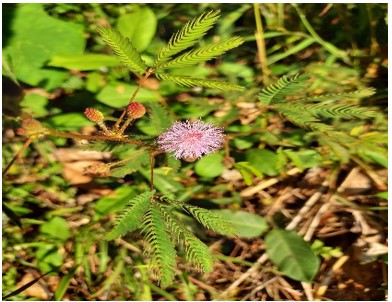Conceptual study on efficacy of Lajjalu Moola Taila in Sadhyovrana
DOI:
https://doi.org/10.21760/jaims.9.2.37Keywords:
Vrana, Sadhyovrana, Vrana Ropana, Lajjalumoola TailaAbstract
A surgeons' initial challenge is management of Vrana (wound). Vrana is the one which does the Gatravichurnana (disruption of tissues) and produces Vivarnata (discolouration) of the defected body part. Sadhyovranas are those which are caused by trauma and exogenous factors. Sadhyovrana encompasses various types of fresh wounds, including traumatic wounds, burn wounds, animal bites, and post-operative wounds. The aim of wound care is to promote wound healing in the shortest time possible, with minimal pain and scarring. While promotion of wound healing still remains a topic of discussion in modern science, the ancient system of Ayurveda has described concept of Vrana Ropana and is elaborated in the treatise Sushruta Samhita under Shashti Upakrama.[1] There is a need to explore this unique concept of Vrana Ropana under which many formulations have been mentioned in various classics which aids in early healing of the wounds. In the context of Sadhyovrana, Acharya Shodala, as cited in the Gadanigraha, refers the use of Lajjalumoolataila especially in shastraghata Vrana.[2] He particularly emphasises on its Ropanakarma function, which accelerates wound healing by preventing Paka thus, ensuring a quick recovery. Hence, an effort has been undertaken to explore the effectiveness of Lajjalumoola Taila in promoting wound healing, with a particular focus on its application in Sadhyovrana.
Downloads
References
Vaidya Jadvji Trikamji Acharya, Sushrutha Samhitha of Sushrutha with Nibandhasangraha commentary of Sri Dalhanacharya, chikitsasthana, 1st chapter, 9th verse, Chaukambha Sanskrit Sansthan, Varanasi, 2017, p.398.
Indradeva Tripathi, Gadanigraha of Sri Vaidya Sodhala with The ‘Vidyotini’ hindi commentary, vol.3, shalyatantre sadhyovranadhikara, verse 58, Choukambha Sanskrit Series Office, Varanasi, 1969, p.311.
Sen CK. Human Wounds and Its Burden: An Updated Compendium of Estimates. Adv Wound Care (New Rochelle). 2019 Feb 1;8(2):39-48. doi: 10.1089/wound.2019.0946.
Vaidya Jadvji Trikamji Acharya, Sushrutha Samhitha of Sushrutha with Nibandhasangraha commentary of Sri Dalhanacharya, chikitsasthana, 2nd chapter Chaukambha Sanskrit Sansthan, Varanasi, 2017, p.408-415.
K.R. Shrikantha Murthy, Bhavaprakasha of Bhavamishra, volume1, poorvakhanda, guduchyadi varga, verse 273, 2004, Chowkambha Krishnadas Academy, Varanasi, p.272.
Acharya Priyavrata Sharma, Dhanwantari Nighantuh, karaveeradi varga, verse 98, 1998, Chaukambha Orientalia, Varanasi, p. 139.
Ahmad H, Sehgal S, Mishra A, Gupta R. Mimosa pudica L. (Laajvanti): An overview. Pharmacogn Rev. 2012 Jul;6(12):115-24. doi: 10.4103/0973-7847.99945. PMID: 23055637; PMCID: PMC3459453.
Dnyaneshwar D. Kokane, Rahul Y. More, Mandar B. Kale, Minakshi N. Nehete, Prachi C. Mehendale, Chhaya H. Gadgoli, Evaluation of wound healing activity of root of Mimosa pudica, Journal of Ethnopharmacology, Volume 124, Issue 2, 2009, Pages 311-315, ISSN 0378-8741, https://doi.org/10.1016/j.jep.2009.04.038.
S.Kannan, S.Aravinth Vijay Jesuraj, Wound Healing Activity Of Mimosa Pudica Linn Formulation, International Journal of PharmTech Research, 2009, https://www.academia.edu/download/49257665/pt_94_201554-1558.pdf
Manish Pal Singh, S. Bharghava, Wound Healing Potential of Alcoholic Extract of Mimosa pudica Linn. Leaves, Pharmacologyonline 2: 32-38 2010, https://pharmacologyonline.silae.it/files/archives/2010/vol2/004.Singh.pdf
Paul J, Khan S, Wound healing evaluation of chloroform and methanolic extracts of Mimosa Pudica roots in rats, International Journal of Biological & Medical Research, 2010,https://www.academia.edu/download/67962716/Wound_healing_evaluation_of_chloroform_a20210709-32367-gk7lxe.pdf
Pawaskar SM, Kale KU. Antibacterial activity of successive extracts of Mimosa pudica. Indian Drugs. 2006;43:476–80.















